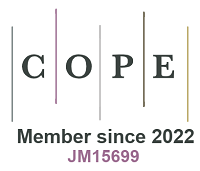MoxC nanoparticles confined in carbon nanotubes for selective hydrodeoxygenation of guaiacol to value-added phenol
Abstract
Transition metal carbides have emerged as promising non-precious heterogeneous catalysts for lignin hydrodeoxygenation, but achieving high selectivity toward a specific product remains a significant challenge. In this work, we precisely control guaiacol conversion and phenol selectivity by tailoring the spatial distribution of molybdenum carbide (MoxC) nanoparticles on carbon nanotubes (CNT). The nanoparticles encapsulated within the CNT interior channels exhibit a coexistence of α-MoC and β-Mo2C phases (MoxC@CNT), while the MoxC supported on CNT outside surfaces, which displays a single-phase β-Mo2C structure (Mo2C/CNT). The confined MoxC@CNT exhibits superior catalytic performance, delivering a phenol space-time yield of 131.5 μmol gMo–1 s–1 and an outstanding selectivity of 91.7%. In contrast, Mo2C/CNT with nanoparticles dispersed on the outer CNT surface shows a poor guaiacol conversion. Furthermore, bulk Mo2C achieves high guaiacol conversion but yields considerable amounts of benzene alongside phenol. Characterizations by means of HRTEM, CO–TPD, and H2–TPD reveal that the confinement effects within the MoxC@CNT channels enriches H2 and reactants, in addition to the synergy effects of α-MoC and β-Mo2C phases, thereby boosting catalytic performance. However, bulk Mo2C facilitates Caryl–OH removal from phenol, resulting in benzene formation.
Keywords
Guaiacol, hydrodeoxygenation, molybdenum carbide, carbon nanotubes, confined catalysis
Cite This Article
Da W, Pan D, Chen Y, Liu J, Hong B, Deng X, Wu L, Chen W, Fang H, Yuan Y. MoxC nanoparticles confined in carbon nanotubes for selective hydrodeoxygenation of guaiacol to value-added phenol. Chem Synth 2025;5:[Accept]. http://dx.doi.org/10.20517/cs.2025.61












